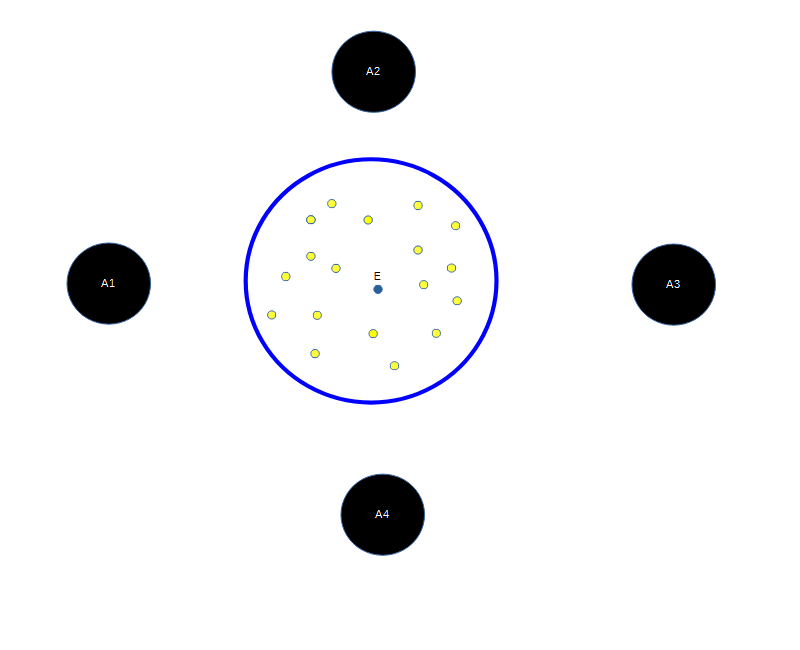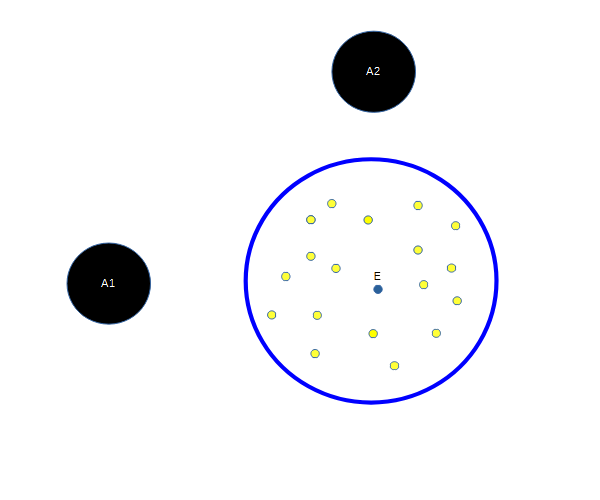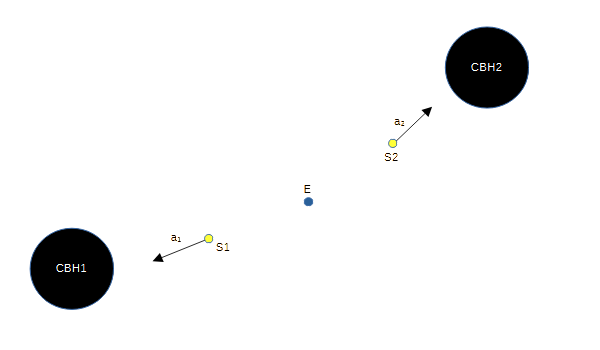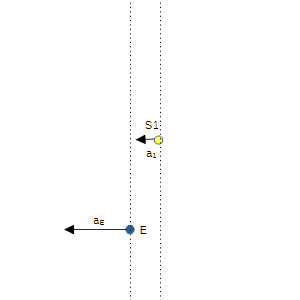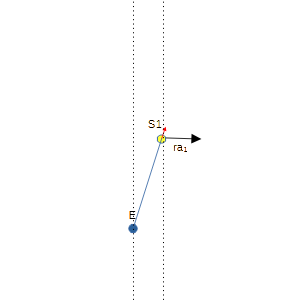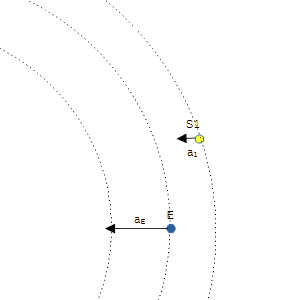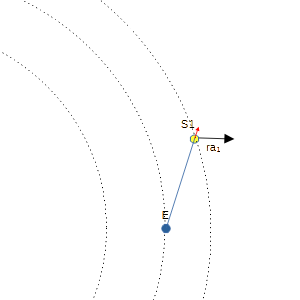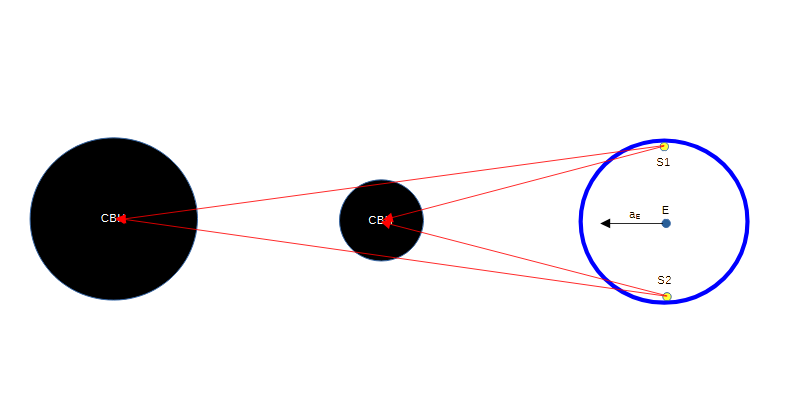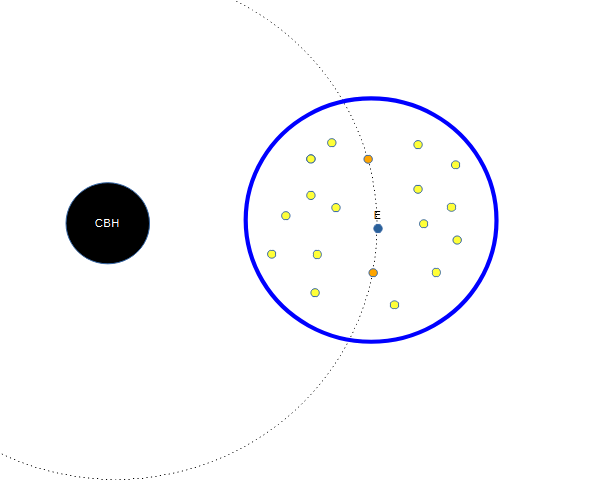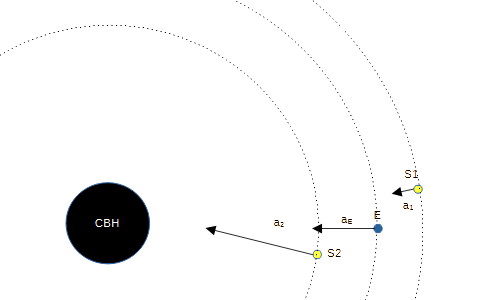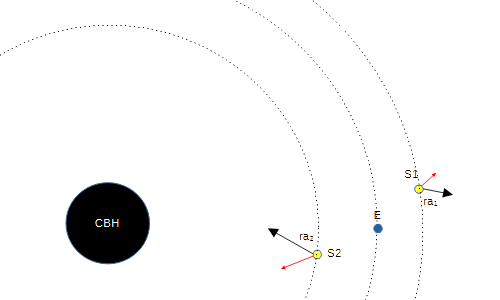

Max70
Senior Members-
Posts
45 -
Joined
-
Last visited
Content Type
Profiles
Forums
Events
Everything posted by Max70
-
I think that the ideas I've presented on my thread "The simplest cause of the accelerating expansion of the universe" could be tested by means of relativistic N-body simulations. Do you think it's feasible ?
- 1 reply
-
-1
-

The simplest cause of the accelerating expansion of the universe
Max70 replied to Max70's topic in Speculations
The attraction of CBH1 on S2 is minor that the attraction of CBH2 on S2. The attraction of CBH2 on S1 is minor that the attraction of CBH1 on S1. I think that the above affirmation is not applicable if the observed universe (that is the part of the observable universe that we actually observe with our telescopes) is a little part of a turn of the spiral in the video in the Wikipedia page of the galaxy rotation curve. I think that the above affirmation is also not applicable to the cases shown in the following figures (where A1, A2, A3 and A4 are attractors): I quote the Wikipedia page Expansion of the universe: "Negative-pressure fluids, like dark energy, are not experimentally confirmed, but the existence of dark energy is inferred from astronomical observations". Dark energy is inferred from astronomical observations. But we can't observe the part of the observable universe that is outside the range of our current telescopes.- 130 replies
-
-1
-

The simplest cause of the accelerating expansion of the universe
Max70 replied to Max70's topic in Speculations
😕 -

The simplest cause of the accelerating expansion of the universe
Max70 replied to Max70's topic in Speculations
In my last post I didn't dispute the existence of the dark matter. -

The simplest cause of the accelerating expansion of the universe
Max70 replied to Max70's topic in Speculations
I contest this figure and this sentence. I'll try to explain with this video in the Wikipedia page of the galaxy rotation curve. Now imagine that the observed universe (that is the part of the observable universe that we actually observe with our telescopes) is a little part of a turn of the spiral in the video. Which is the acceleration of the objects that we observe ? The objects in the spiral have not only centripetal acceleration, but also tangential acceleration. I don't think that all the objects that we observe have the same acceleration, because of the spiral motion. -

The simplest cause of the accelerating expansion of the universe
Max70 replied to Max70's topic in Speculations
🤣- 130 replies
-
-1
-

The simplest cause of the accelerating expansion of the universe
Max70 replied to Max70's topic in Speculations
But there are attractors like the Great Attractor and the Shapley Attractor. Similar attractors may exist on a larger scale and influence the motion of the objects that we observe. Which is the result of these calculations done for all the objects in the colossal galaxy cluster ? Which is the result of these calculations if there are two or more colossal galaxy clusters and colossal black holes ? Can't these calculations demonstrate that the accelerations of the objects that we observe are due to the gravity ? The following figure shows a simple case (where CBH1 adn CBH2 may be colossal black holes or attractors): -

The simplest cause of the accelerating expansion of the universe
Max70 replied to Max70's topic in Speculations
I mean mathematically complicated. I mean that the calculations are more complicated. I said "simplest cause" because it does not require other hypotheses such as quintessence, massive gravity or multiverse.- 130 replies
-
-1
-

The simplest cause of the accelerating expansion of the universe
Max70 replied to Max70's topic in Speculations
I think that the things are more complicated. As I explained in my first post, the objects that we observe are only a little part of a colossal galaxy cluster around a colossal black hole. The motion of objects that we observe is influenced not only by the colossal black hole but also by the other objects in the colossal galaxy cluster. In addition, as I said in some of my posts, it is possible that there are other colossal galaxy clusters and colossal black holes that influence the motion of objects that we observe.- 130 replies
-
-1
-

The simplest cause of the accelerating expansion of the universe
Max70 replied to Max70's topic in Speculations
It's too tiresome and boring.- 130 replies
-
-7
-

The simplest cause of the accelerating expansion of the universe
Max70 replied to Max70's topic in Speculations
I am neither a physicist nor a mathematician.- 130 replies
-
-1
-

The simplest cause of the accelerating expansion of the universe
Max70 replied to Max70's topic in Speculations
I've corrected the dotted lines. I suppose that the CBH is so massive that the values of the accelerations are different. The new figures for absolute and relative accelerations are: I have the following problem: In my last figure, S1 is accelerating away from the Earth, but it is outside of the cones A and B. How can this be explained ? -

The simplest cause of the accelerating expansion of the universe
Max70 replied to Max70's topic in Speculations
There is something that I don't understand. The following figures show the absolute and relative acceleration of a supernova when the CBH is very far. The accelerations are parallel but, if the CBH mass is huge, the values of the accelerations are different. Are the following figures correct ? -

The simplest cause of the accelerating expansion of the universe
Max70 replied to Max70's topic in Speculations
Do you really want the calculation ? Calculation is the arctangent. -

The simplest cause of the accelerating expansion of the universe
Max70 replied to Max70's topic in Speculations
Who said “It is not unscientific to take a guess, although many people who are not in science believe that it is.” ? -

The simplest cause of the accelerating expansion of the universe
Max70 replied to Max70's topic in Speculations
Maybe there was such misunderstaning with Ghideon. -

The simplest cause of the accelerating expansion of the universe
Max70 replied to Max70's topic in Speculations
I think there is a misunderstanding. I think that the problem is the sentence "as CBH gets farther", that I used to describe different possibilities of the current situation. I don't think that the Earth and the supernovae are moving away from the CBH. I think that the Earth and the supernovae are moving towards the CBH. I will try to explain with the following figure: This figure describes two different possibilities of the current situation: one with CBH closer to the Earth and one with the CBH further away from the Earth. In the second case I imagine that the CBH has a larger mass, so that the accelerations have magnitude equal to the first case. The red arrows describe the directions (not the magnitude) of the accelerations of the supernovae. In the second situation, because the CBH it's further away, the angles of the accelerations are minor than the first case and are nearest to 0, that is the angle of the acceleration of the Earth. It's clear ? -

The simplest cause of the accelerating expansion of the universe
Max70 replied to Max70's topic in Speculations
But as CBH gets farther, don't the acceleration of any supernova in the blue circle tend to align with the acceleration of the Earth ? -

The simplest cause of the accelerating expansion of the universe
Max70 replied to Max70's topic in Speculations
My drawing does not show the true proportions of the blue circle with respect to its distance from the CBH. I think that the CBH is so far away that the volume of the two cones A+B is 100% of the blue sphere. Therefore all the observed supernovae are accelerating away. -

The simplest cause of the accelerating expansion of the universe
Max70 replied to Max70's topic in Speculations
I'll try to explain better with the following figure: E, that is the blue dot, is the Earth. The blue circle contains the part of the observable universe that we can observe because it is in the range of our telescopes. The yellow and orange dots are supernovae. It is more likely to have supernovae in the position of the yellow dots (that are at any distance from the CBH) than in the positions of the tangential orange dots (that are at the same distance of E from CBH). -

The simplest cause of the accelerating expansion of the universe
Max70 replied to Max70's topic in Speculations
It is more likely to have supernovae located like S1 and S2 in my last two correct figures than tangentially (that is at the same distance of E from CBH). This is based on the standard Big Bang theory. There have always been scientists who didn't believe in the Big Bang. There are also microwave, radio, X ray and gamma ray telescopes. In the future we could have types of telescopes that we cannot imagine now. -

The simplest cause of the accelerating expansion of the universe
Max70 replied to Max70's topic in Speculations
The accelerating expansion has been discovered observing the Type Ia supernovae. I think that is unlikely to have these supernovae at the same distance from the CBH or located tangentially to the Earth. -

The simplest cause of the accelerating expansion of the universe
Max70 replied to Max70's topic in Speculations
In my first post I've drawn the four bodies aligned. If the angles between S1, S2 and the CBH are too large, as in my previous wrong figures, S1 and S2 are too far away from the Earth, therefore we cannot observe them because they are out of the range of our telescopes. -

The simplest cause of the accelerating expansion of the universe
Max70 replied to Max70's topic in Speculations
A stupid mistake made late at night. The problem is that the angles between S1, S2 and the CBH are too large. Are the following figures correct ? -

The simplest cause of the accelerating expansion of the universe
Max70 replied to Max70's topic in Speculations
Why do you consider only one component of the acceleration ?

